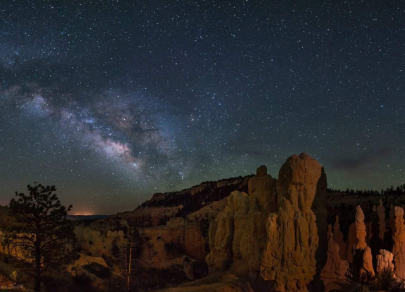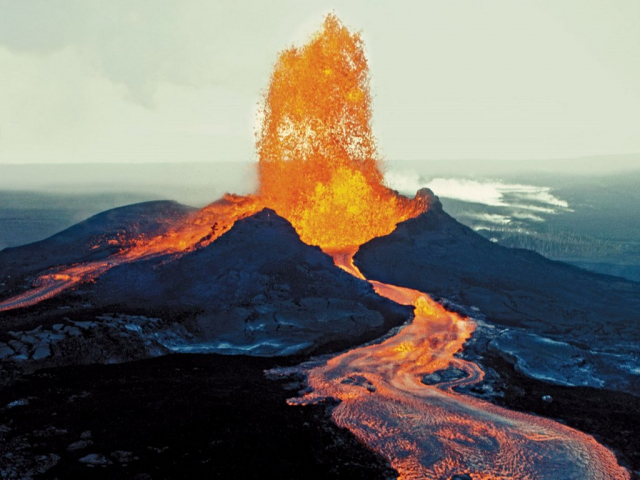
Top 5 locations for stargazing
Astrotourism is becoming more popular every year. People are willing to travel thousands of kilometers to admire the stars. But which places on Earth are considered the best for this? Let's find out now!




Mauna Loa (US, Hawaii)
Mauna Loa is one of the largest volcanoes in the world. It surpasses others in both mass and volume. Mauna Loa is one of five volcanoes that form the Island of Hawaii in the US. According to scientists, this active volcano erupts around 700 thousand years. The last eruption occurred in the late twentieth century, from March 24 to April 15, 1984.

Yellowstone Caldera (US)
Scientists believe that the Yellowstone Caldera is the most dangerous among the active volcanoes. The volume of its lava output rate can be more than 1,000 cubic kilometers that cause severe destruction. Super-eruptions of volcanoes usually affect huge areas. Many species of animals and plants become extinct due to such disasters. Some specialists assume that super-eruption may be one of the reasons for the death of civilization as the eruption of such volcanoes triggers a chain reaction. It evokes the activity of other volcanoes which leads to tectogenesis.

Vesuvius (Italy)
Mount Vesuvius is located in Italy, about 9 km east of Naples. It is the only volcano in Europe that has been erupting for the past hundred years. The last eruption was recorded in 1944. Nowadays, Vesuvius is one of the most destructive volcanoes in the world. Researchers are also concerned about three million people living near the volcano.

Popocatépetl (Mexico)
It is one of the highest active volcanoes in Mexico. Its height reaches 5,426 m. Residents of Puebla, 40 km east of the volcano, can enjoy the view of the snow-covered and glacier-covered mountain. The last major eruption was recorded in 2000. Fortunately, scientists had warned about the eruption in advance and residents were evacuated from the disaster area.

Sakurajima (Japan)
It is an active composite volcano located in Japan. In the past, Sakurajima was an island often called the Vesuvius of the east. Eruptions are permanently registered on its territory. Due to volcanic ash left after the eruption, highlands of white sand were formed in this region. The volcano is hazardous because of its location in a densely populated area. It is situated near the city of Kagoshima that alarms scientists.

Galeras (Colombia)
According to scientists, Galeras has been active for a million years. It is located in southern Colombia near the border with Ecuador. Volcanic eruptions are like waves: periods of calm are replaced by periods of storms. In 1988, after a 10-year quiet period, Galeras woke up again. A 1993 eruption killed nine people, six scientists, and three tourists who were heading towards the volcano's crater as part of a scientific expedition. The rapid and unexpected eruption of the volcano took their lives.

Merapi (Indonesia)
Merapi is the most famous among the active volcanoes in Indonesia. Eruptions are regularly recorded in this area. The volcano has been active since 1548, i.e. for 10 thousand years. It is located near the city of Yogyakarta. Nowadays, thousands of people live on the slopes of Mount Merapi despite scientists' warnings.

Nyiragongo (Congo)
It is one of the most active volcanoes in Africa and one of the eight volcanoes located in the Virunga mountains. Since 1882, Nyiragongo has erupted at least 34 times. The last most destructive eruption was on 17 January 2002. Back then, hot lava destroyed 40% of the city of Goma.

Ulawun (Papua New Guinea)
Ulawun is the most active volcano in Papua New Guinea. Moreover, it is the highest volcano in the Bismarck archipelago. The first recorded eruption of Ulawun occurred in 1700. Overall, there have been 22 volcanic eruptions. Today, several thousand people live near this volcano. During a major eruption in 1980, volcanic ash emissions reached a height of 18 km. The disaster devastated an area of 20 square kilometers.

Taal (Philippines)
This large active volcano is located on the island of Luzon. It is 50 km from Manila, the capital of the Philippines. Taal is one of the active Philippine volcanoes which is part of the Pacific Ring of Fire. The volcano has erupted several times causing loss of life and destruction on the island. The last eruption occurred in 1977. Signs of its activity have been regularly observed since 1991. According to scientists, sometimes eruptions lead to small seismic fractures.

Astrotourism is becoming more popular every year. People are willing to travel thousands of kilometers to admire the stars. But which places on Earth are considered the best for this? Let's find out now!